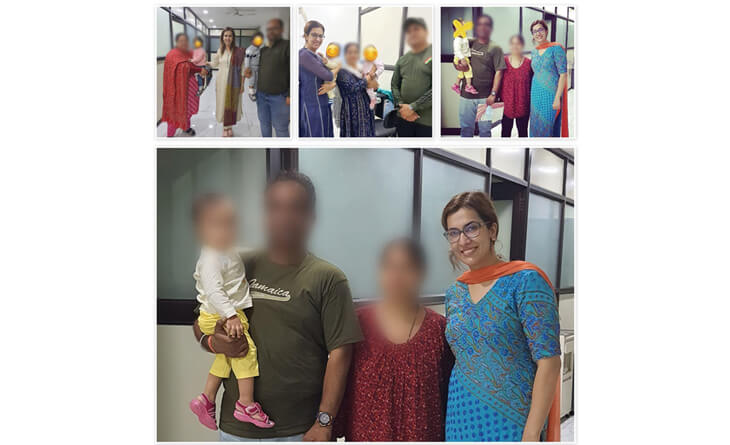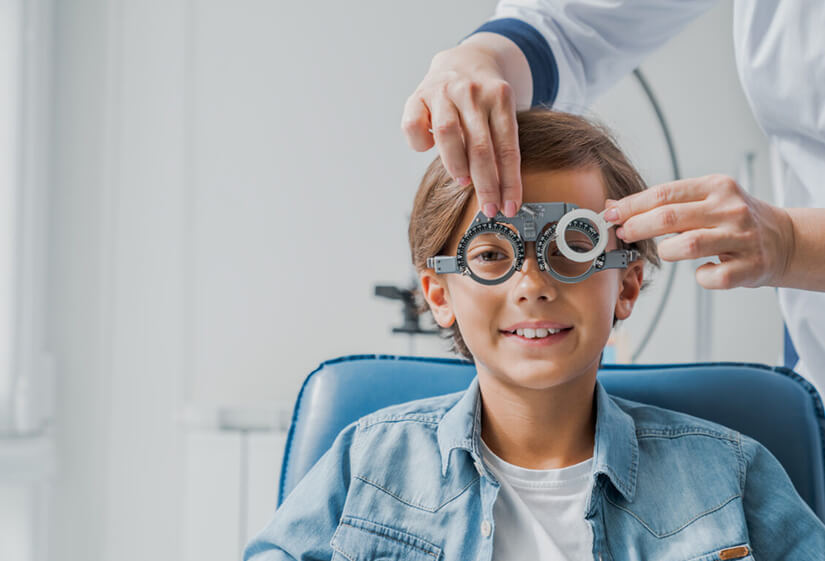What is A Paediatric Ophthalmologist?
A paediatric ophthalmologist is an eye doctor with advanced training and expertise in diagnosing and treating eye conditions, specifically in children from birth to 13 to 15 years of age. They are skilled in addressing the unique visual challenges during childhood development. Their role involves diagnosing and treating common eye conditions in children and managing more complex and rare paediatric eye disorders.

Common Eyes Problem in Children
The following are the most common eye problems in children that paediatric ophthalmologists can diagnose, treat and manage:
- Refractive Errors: The most common refractive errors among children are nearsightedness (myopia), farsightedness (hyperopia), and astigmatism. These errors occur when the eye cannot focus light correctly on the retina, resulting in blurred vision at near or far distances. These conditions can often be corrected with eyeglasses or contact lenses, and the best eye specialist in Delhi can help determine the appropriate prescription.
- Amblyopia: Amblyopia, also known as Lazy Eye, is a condition where one eye experiences reduced vision due poor visual stimulus to the brain. This may be due to high refractive error, asymmetry in glass powers, squint or cataract. When identified and addressed early, it typically responds well to treatment. However, if detected at a later stage, it becomes challenging to treat, potentially leading to permanent vision impairment in children.
- Cataract: A cataract is a clouding of the lens of the eye. It can cause blurred vision and make it difficult to see in bright light. Cataracts are more common in older adults but can also occur in children. Paediatric ophthalmology clinic plays a crucial role in the early identification of childhood cataracts through examinations. Not only diagnosing, but operating and managing a paediatric cataract may also be different from an adult cataract.
- Paediatric Glaucoma: Glaucoma is a medical condition linked to increased intraocular pressure, which can damage the optic nerve, a vital component of vision. This damage can lead to irreversible vision impairment. Paediatric glaucoma, though uncommon, may manifest in newborns or during childhood. The most common signs and symptoms of paediatric glaucoma are hazy corneas, excessive tearing, frequent blinking, sensitivity to light, and redness in the eye.
- Retinopathy of prematurity (ROP): ROP is a condition that can affect the eyes of premature babies. It is caused by the abnormal development of blood vessels in the retina. ROP can lead to vision loss but can often be treated with laser surgery or intravitreal injections through a pediatric ophthalmologist or a Retina specialist.
- Keratoconus: Keratoconus causes the cornea to thin and bulge into a cone shape leading to blurred vision, distorted vision, and light sensitivity. Keratoconus typically develops in adolescence or early adulthood but can also occur in children. Paediatric keratoconus can be more aggressive than keratoconus in adults, and it is important to diagnose and treat it early to prevent vision loss.
- Conjunctivitis: Conjunctivitis or pink eye is an inflammation of the conjunctiva, the thin membrane that covers the white part of the eye and the inside of the eyelid. A virus or bacteria can cause conjunctivitis, and it is usually contagious but can be treated with eye drops or antibiotics. Sometimes, it is also allergic and again is very common in children.
- Coats Disease: Coats disease is a rare but severe condition primarily affecting young boys. It causes abnormal blood vessel growth in the retina and can lead to retinal detachment. Prompt diagnosis and treatment are essential to prevent vision loss.
While looking for a paeditric ophthalmologist for your child, make sure you choose someone with experience in treating children and makes your child comfortable.
Paediatric ophthalmologists are not just eye doctors; they are compassionate and skilled experts who understand the unique needs of their young patients.

